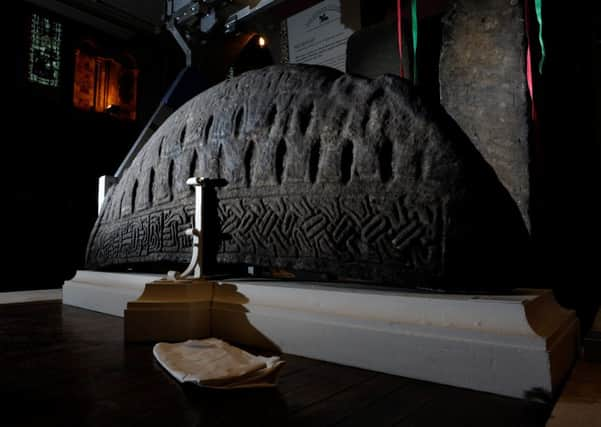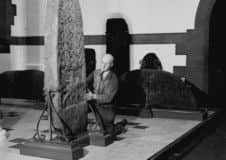1,100-year-old ‘hogback’ gravestone leaves Govan


One of five rare “hogback stones” was moved from Govan Old Parish Church to form part of a new exhibition called Vikings: Life and Legend, which will run at the British Museum until June 2014.
The half-tonne stone is one of the famous “Govan Stones”, which are on permanent display in Govan Old Church and form one of Scotland’s most important cultural artefacts.
Advertisement
Hide AdIt features designs thought to represent stylised Viking houses for the dead, showing the exchange of ideas and cultural practices between the Norsemen and the Britons.


The stones date from 925-1000 when Govan was a political, administrative and spiritual capital of the ancient Britons, the seat of the kings of Strathclyde and one of the most important centres in the UK.
Stephen Driscoll, Professor of Historical Archaeology at the University of Glasgow, said: “The Govan Stones are central to our understanding of the important but poorly documented kingdom of Strathclyde. Their presence gives us clues to the complex and evolving society that existed within the region at this time.
“While the wording on the stones is mostly Celtic, the shape and some of the designs are taken from the Viking tradition, giving us the idea that the old kingdom was a melting pot of indigenous Celtic and Briton cultural influences and newer Norse ones.”
The university said that the collection of hogback stones in Govan is the largest in one place in the UK and offers a unique window into a relatively little-known period of British history. The five hogbacks in Govan Old Church are the largest known collection in Scotland. They are typically found, usually on a smaller scale, in areas of northern England settled by Vikings and on the southern Scottish mainland where there was a significant Norse presence.
The stone is an example of an ornately carved gravestone made to mark the resting place of one of the ancient kings of Strathclyde.
Advertisement
Hide AdAround the time that the Vikings were conquering much of northern Europe, the kingdom of the Britons covered a large part of southern Scotland and northern England.
The stone will be part of the inaugural exhibition for the Sainsbury Exhibition Gallery, a custom-built space currently being constructed as part of the British Museum’s new World Centre for Exhibitions and Conservation.
Advertisement
Hide AdA few examples of hogback tombstones are found in other parts of Scotland but the five at Govan form the country’s largest single group.
The type is found also in northern England, in what was once the Anglo-Saxon kingdom of Northumbria, with a small number in the English Midlands.